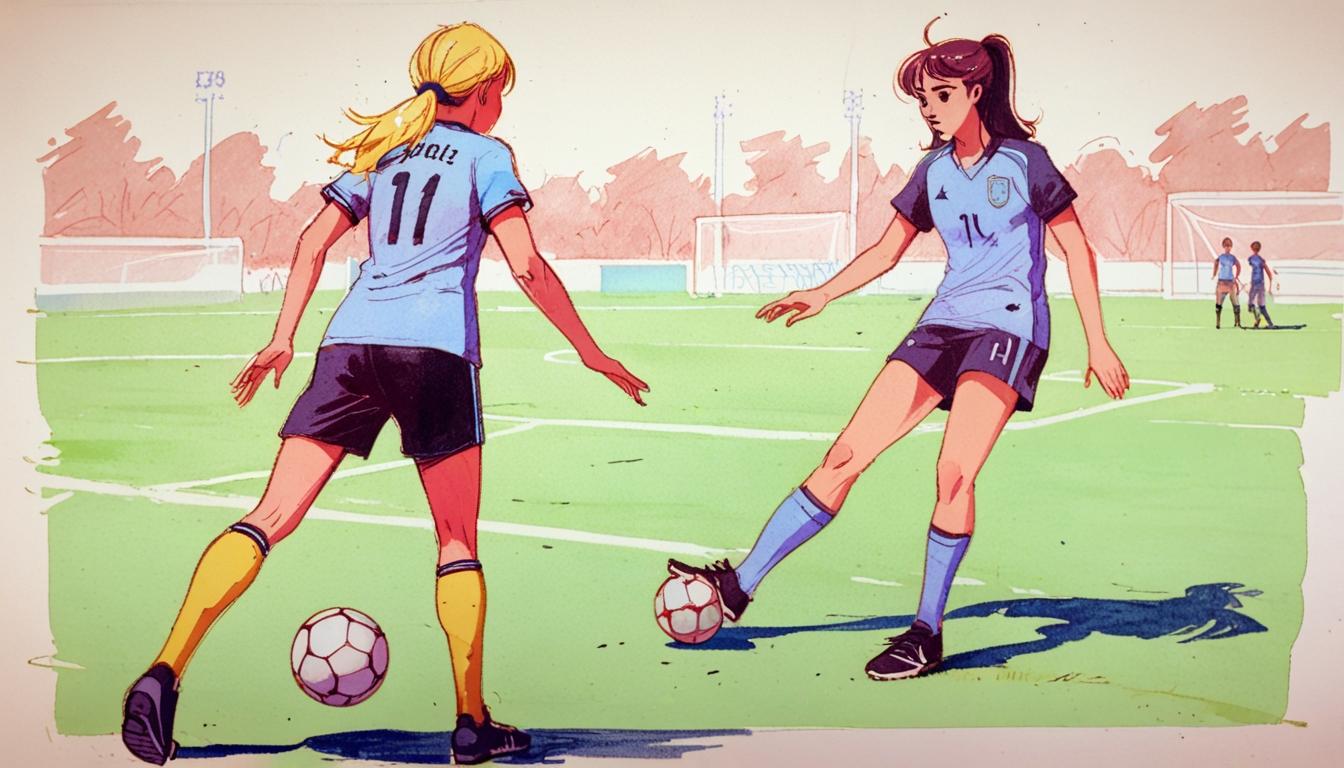A recent incident involving a teenage amateur footballer has sparked significant debate around the participation of transgender athletes in women's sports, highlighting a complex intersection of safety, fairness, and inclusivity. Cerys Vaughan, now 18, was banned by the Football Association (FA) for allegedly displaying "improper conduct" during a friendly match last year, where she questioned the inclusion of a transgender opponent. This incident has not only affected Vaughan’s life but has also raised questions about the implications of new policies regarding transgender participation in sports.
During the match in Lancashire, Vaughan inquired whether her competitor was a man. Upon realising the player was a transgender woman, she raised concerns with the referee regarding fairness and safety, questioning whether the player was permitted to compete. The situation escalated when another player overheard her and labelled her comment as transphobic. Subsequently, Vaughan received a six-match ban, four of which were suspended. However, the FA has since quashed this ruling, citing that a new process needs to be implemented, though the original complainant has withdrawn due to personal safety concerns stemming from media coverage.
In a statement, Vaughan expressed her disbelief regarding the sanction, emphasising that she did not understand the appropriateness of the accusation levelled against her. “It’s definitely impacted my normal life a lot,” Vaughan explained to BBC Sport, adding that the FA’s decision caused unnecessary distress. The FA has now stated that it will not pursue the case further, marking a moment of ambiguity in how the organisation addresses such sensitive issues moving forward.
The FA's position reflects a broader shift in policy following a recent Supreme Court ruling that redefined a woman strictly as one who is biologically female. This decision has led to the FA announcing a ban on transgender women from competing in women’s teams, reversing a prior position where participation was allowed if participants had reduced testosterone levels. Such dramatic policy changes echo similar movements seen internationally, notably in the United States, where legislation is increasingly scrutinising the participation of transgender athletes in women’s sports.
The ramifications of these policies extend beyond the pitch. For instance, the Pennsylvania Senate has passed legislation aimed at barring transgender athletes from participating in girls’ and women’s sports at various levels, igniting fierce debate about fairness and discrimination. Critics of such bills argue that they not only undermine the rights of transgender individuals but also enforce a culture of scrutiny that could affect all female athletes, a sentiment shared by many activists and advocates of transgender rights.
Moreover, the ban instituted by the FA has drawn criticism from within the sporting community. Natalie Washington, a transgender woman and amateur player, articulated her concerns, arguing that many who transition face daunting challenges when attempting to compete within their identified gender, particularly when considering a return to men’s football. The division between biological and gender identity continues to provoke questions about inclusivity and safety in sports.
Additional sectors are also taking a stand; for instance, World Netball recently announced a ban on transgender women from competing in the female category at international levels, citing fairness and safety as justifications for their decision. Such actions indicate a growing trend among sporting bodies to reassess their policies in light of evolving social norms and legal frameworks.
The discourse surrounding Vaughan's incident and the resultant policy changes reflects a broader national conversation on identity and equality. As the sporting community navigates these contentious waters, the importance of dialogue and understanding in addressing both athlete safety and inclusivity will remain paramount. The FA’s challenge lies in finding a balance that respects the rights of transgender athletes while also addressing the concerns expressed by women in the sport, an endeavour that will undoubtedly shape the future landscape of women’s football in England and beyond.
Reference Map
- Paragraph 1: [1], [2]
- Paragraph 2: [1], [4]
- Paragraph 3: [1], [5]
- Paragraph 4: [3], [6]
- Paragraph 5: [5], [7]
- Paragraph 6: [6], [7]
Source: Noah Wire Services
